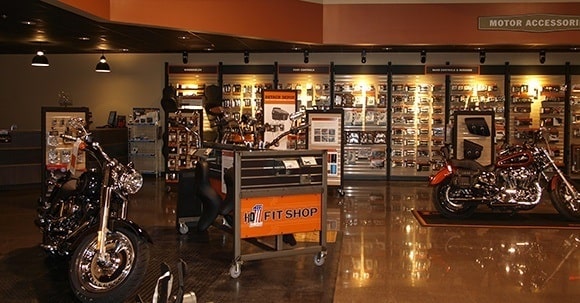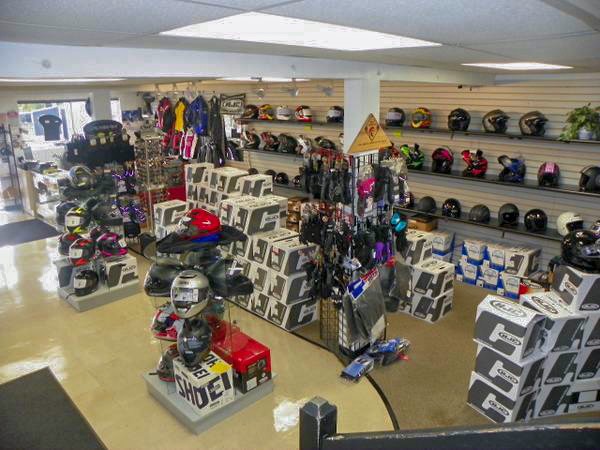Must-Have Motocross Gear: Elevate Your Riding Experience Today
Must-Have Motocross Gear: Elevate Your Riding Experience Today
Blog Article
A Detailed Appearance at Bike Components: What Every Cyclist Needs To Know
A thorough understanding of motorbike components is not merely useful but vital for any cyclist aiming to make best use of performance and safety and security. Each component, from the engine's complex workings to the dependability of brake systems, plays a critical duty in the overall experience and performance of the bike.
Comprehending the Engine
The engine, frequently considered as the heart of a motorcycle, is a complicated setting up of elements that operate in consistency to convert fuel right into motion. At its core, the engine's main feature entails the combustion process, where air and gas mix and fire up within the cyndrical tubes, causing regulated explosions that drive the pistons. These pistons relocate up and down, transforming chemical energy into power, which consequently transforms the crankshaft, ultimately powering the bike.

Understanding the intricacies of a bike engine is critical for riders and enthusiasts alike. It not only offers insight right into just how motorbikes achieve their outstanding power and rate but additionally help in effective maintenance and troubleshooting, ensuring longevity and integrity on the road.
Suspension Systems
While the engine powers the bike, the shock absorber plays an essential function in ensuring a controlled and smooth adventure. The suspension system is responsible for soaking up shocks from the road surface, keeping tire get in touch with, and providing security during cornering and stopping. It makes up 2 primary components: the front forks and the back shock absorbers.
Front forks are generally telescopic, dampening and having a springtime mechanism. The springtime expands and presses to absorb bumps, while the moistening device controls the activity to avoid excessive bouncing. This mix guarantees the front wheel stays in contact with the roadway, providing premium handling and comfort.
The rear suspension, generally a monoshock or twin-shock arrangement, works likewise to the front suspension however is customized to support the motorbike's weight and cyclist - moto parts nz. It handles back wheel motion, adding to the bike's overall balance and responsiveness
Suspension systems can be flexible, allowing motorcyclists to fine-tune preload, compression, and rebound settings according to personal preferences and riding problems. This adjustability enhances performance by enhancing the motorbike's communication with varied terrains. In summary, an efficient shock absorber is critical for motorcyclist comfort, safety, and the motorcycle's dealing with prowess.
Brake Elements
Stopping power is a fundamental aspect of motorcycle safety, and it hinges on the efficiency of the brake components. The primary elements of a motorcycle's stopping system include the brake pads, calipers, rotors, and master cylinder. mx parts nz. Each of these elements plays a vital role in guaranteeing efficient braking efficiency
Brake pads are crucial as they create the required friction versus the rotors to decrease or stop the bike. Created from materials such as sintered metal or organic compounds, the selection of brake pad product substantially affects performance and durability. Calipers, housing the brake pads, use stress to the pads when the brake lever is involved, facilitating contact with the blades.
The blades, typically made from stainless-steel or cast iron, are placed to the wheels and act as check it out the surface versus which the brake pads press. Their style, including size and thickness, influences warm dissipation and quiting power. The master cyndrical tube, connected to the brake bar, generates hydraulic stress transferred via brake lines to the calipers, making sure consistent stopping force.
Regular maintenance and evaluation of these components are essential for optimal efficiency, avoiding wear and making certain motorcyclist safety on the roadway.
Tire Fundamentals
Beyond keeping robust braking systems, making certain optimal tire performance is similarly substantial for motorcycle riding leathers safety and performance. Tires are the single contact point between the motorbike and the roadway, making their condition crucial in dealing with, stability, and general adventure quality. Selecting the suitable tire type is vital, as it straight affects grip and efficiency. Alternatives vary from touring to sport tires, each developed to fit certain riding problems and designs.

In addition, think about the tire's age. Rubber compounds weaken in time, also if tread shows up adequate. Inspect the sidewall for the DOT (Department of Transportation) code to identify the tire's age. Normally, replacement is encouraged every five years, despite wear. Spending interest in these tire essentials not only maximizes efficiency but additionally considerably enhances riding safety.
Electrical Systems
In the realm of motorcycle upkeep, the electric system plays an important duty in ensuring reputable efficiency and cyclist safety and security. This intricate network includes necessary parts such as the battery, generator, starter electric motor, and wiring harness. Each element is vital for the seamless operation of the motorcycle, from ignition to lighting and communication with various sensors.
The battery serves as the heart of the electrical system, offering the required power to begin the engine and operate accessories. Consistently examining the battery's voltage and terminals for corrosion is essential to avoid unforeseen failings. The alternator, on the other hand, charges the battery while the engine is running, ensuring a continuous power supply.
The starter electric motor is accountable for launching engine operation, converting electrical energy into mechanical power. To keep it, motorcyclists must pay interest to any type of unusual noises or difficulties during startup. At the same time, the circuitry harness works as the lorry's nerve system, linking all electric elements. Guaranteeing that the wires are undamaged and totally free from damage is essential for stopping brief circuits and guaranteeing performance.
Verdict

Quiting power is a fundamental element of bike safety, and it hinges on the effectiveness of the brake components. The key components of a bike's stopping system include the brake pads, calipers, blades, and master cyndrical tube.Brake pads are essential as they develop the essential rubbing against the blades to reduce down or quit the motorbike.Beyond maintaining durable braking systems, making certain ideal tire performance is equally substantial for bike security and efficiency.In the world of bike maintenance, the electric system plays an essential role in making sure trustworthy performance and rider safety and security.
Report this page